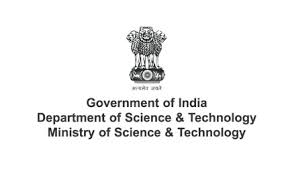Sufferers affected by Kala- Azar, scientifically known as Visceral leishmaniasis (VL), some of the uncared for tropical illnesses could quickly discover aid in an oral nanomedicine from India. The oral therapeutics might assist in the management and elimination of VL, round 95 % of which is reported from Bangladesh, Brazil, China, Ethiopia, India, Kenya, Nepal, Somalia, South Sudan, and Sudan.
Scientists from the Institute of Nano Science & Expertise (INST), Mohali, an autonomous institute of the Division of Science & Expertise, Govt. of India, have developed an oral nanomedicine with the assistance of surface-modified stable lipid nanoparticles primarily based combinational cargo system for combating visceral leishmaniasis. The findings of their research supported by the DST-SERB Early Profession Analysis Award have been just lately revealed within the journals ‘Scientific Stories’ and ‘Supplies Science & Engineering C’.
Based on the INST group, till-date there is no such thing as a research reported the place a mixture of two anti-leishmanial medicine has been delivered by way of nanomodification as a possible therapeutic technique towards visceral leishmaniasis. This work suggests the prevalence of as-prepared modified formulation (m-DDSLNs) floor modified with 2-hydroxypropyl-β-cyclodextrin (HPCD) as a promising method in the direction of the oral supply of anti-leishmanial medicine.
On this research by INST group led by Dr. Shyam Lal M anti-leishmanial medicine Amphotericin B (AmB) & Paromomycin (PM) had been encapsulated in stable lipid nanoparticles and additional modified with 2-hydroxypropyl-β-cyclodextrin (HPCD). The scientists explored the oral therapeutic potential of the formulation within the therapy of visceral leishmaniasis. They employed an emulsion solvent evaporation methodology to arrange HPCD modified twin drug-loaded stable lipid nanoparticles (m-DDSLNs). The nanoparticle-based combinatorial drug supply system developed by them enhanced the efficacy of the formulation in each in vitro and in vivo fashions by lowering intracellular amastigote development in L. donovani-infected macrophages and hepatic parasite burden in L. donovani-infected BALB/c mice mannequin, respectively with out inflicting any vital poisonous uncomfortable side effects.
Based on the INST group, the stable lipid nanoparticles (SLNs) can assist improve the oral uptake of the therapeutic agent by retaining a solubilized state of the drug within the Gastrointestinal Tract and favors the formation of blended micelles (a particular case of solubilization) by inducing the secretion of bile salts and phospholipids. Additional, 2-hydroxypropyl-β-cyclodextrin (HPCD) are cyclic oligosaccharides which can be identified to be molecular hosts which may selectively embrace water-insoluble visitor molecules inside their hydrophobic cavity by way of non-covalent interactions.
This research by INST group could result in product and course of patent enhancing the function of our nation for growing modern remedy towards uncared for illnesses. The utilization of decrease therapeutic dose of the purified medicine by way of nanomodifications will probably be a boon in lowering toxicity, which has been a serious hindrance within the present standard therapy when administered orally.









 Finance
Finance






